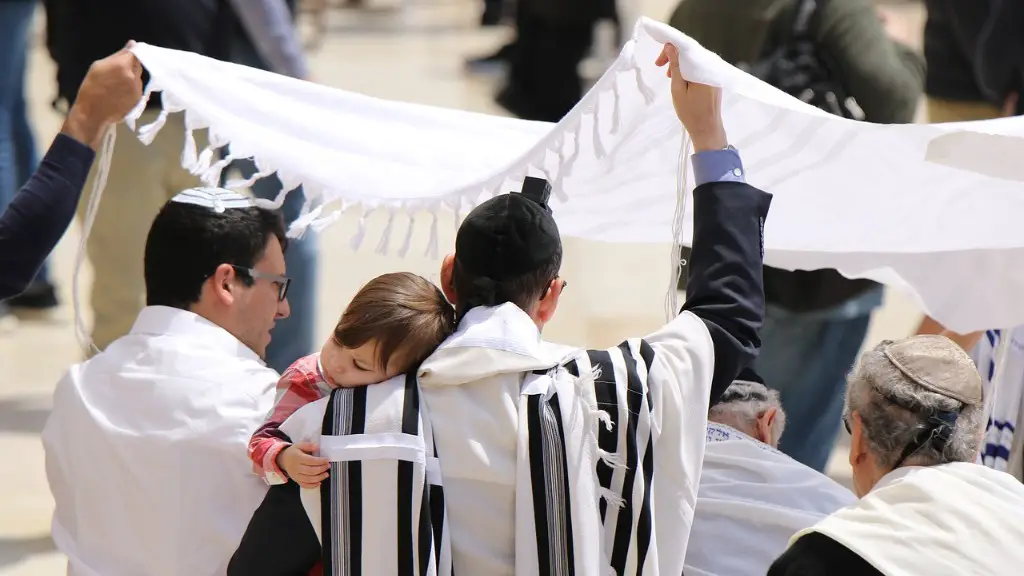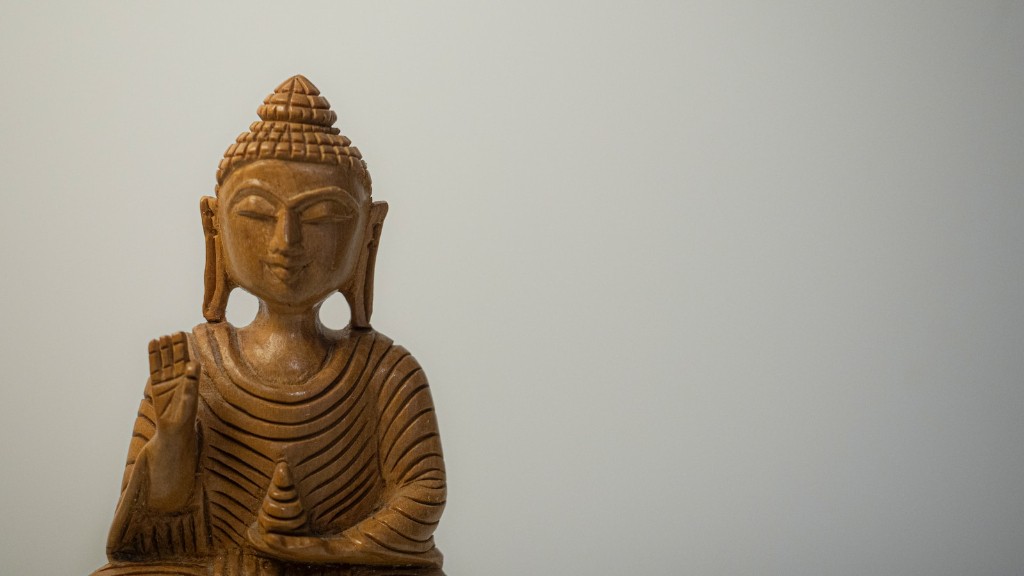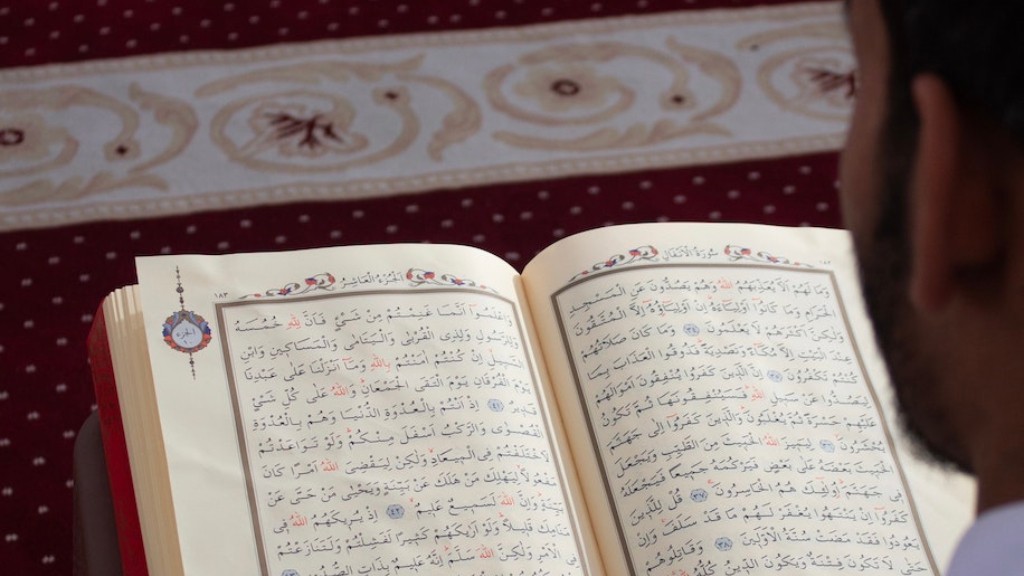Hinduism is one of the oldest and most widely practiced religions in the world with over 1.2 billion Hindus living in India alone. This ancient religion has a rich history and one of its core components is the worship of three main gods known as the Trimurti. These are Brahma, Vishnu, and Shiva and each god has their own unique roles to play in the Hindu pantheon.
Brahma is the Creator of the Universe and all of its inhabitants. According to Hindu mythology, he was born from a golden egg and is said to be the manifestation of truth and justice. He has four heads, each symbolizing a different quality. His four arms, likewise, are said to be an expression of his power and authority. His qualities, combined with his power and authority, make him the ultimate creator of the universe and its inhabitants.
Vishnu is the Preserver of the Universe and all of its inhabitants. He is the second member of the Hindu trinity, alongside Brahma and Shiva. He is associated with strength, power, and protection and is often portrayed riding a white bird or with four arms holding a discus, conch shell, mace, and lotus. He is said to be a protector of the universe and its inhabitants and is considered to be an all-pervading, omniscient figure.
The last of the Trimurti gods is Shiva, who is the Destroyer of the Universe. He is the third and final member of the Hindu trinity, alongside Brahma and Vishnu. He is associated with death, destruction, and change, and is often portrayed with a snake around his neck, an axe in one hand, and a trident in the other. Shiva is considered to be the ultimate destroyer, but he is also a figure of transformation and regeneration.
These three gods are widely worshipped in Hinduism, and they are seen as the core of the religion. Together, they represent the power of creation, preservation, and destruction. They are also seen as a source of both protection and fear, and are said to have unique powers and abilities that can both protect and harm those who invoke them.
The Significance of the Trimurti
The Trimurti gods represent the core of Hinduism. Together, they represent the power of creation, preservation, and destruction. They are also seen as a source of both protection and fear, and are said to have unique powers and abilities that can both protect and harm those who invoke them.
The three gods of the Trimurti serve a higher purpose, and that is to show the balance of the universe. Their relationship symbolizes the cycle of life, death, and rebirth. Brahma creates something from nothing, Vishnu preserves that which already exists, and Shiva destroys it in order to make way for new creation.
The three gods of the Trimurti represent the triumvirate of nature. They represent the various traits that govern life and the fabric of reality. They represent the three aspects of the mind – thinking, feeling, and willing – and the forces of nature – earth, water, and air.
The Trimurti gods also represent the currents of energy that bind us. They represent the three sources of truth – knowledge, virtue, and duty – and the three sources of power – wealth, strength, and action.
Symbols and Rituals of the Trimurti
The Trimurti gods are depicted with various symbols and symbols associated with them. For example, Brahma is represented by the swan, which symbolizes beauty, grace, and knowledge. Vishnu is symbolized by the eagle, which represents strength and power. And Shiva is depicted with the bull, which symbolizes energy, endurance, and courage.
The symbols associated with the Trimurti gods are often used in rituals and prayers. These symbols can help devotees focus their thoughts and prayers to these three main gods. In addition to the symbols associated with the Trimurti gods, devotees may also use objects such as flowers, incense, and candles in rituals and prayers.
The Trimurti gods are also associated with particular colors. Brahma is associated with the color white, Vishnu is associated with blue, and Shiva is associated with red. These colors are often used during rituals and prayers to help devotees invoke the gods. The colors can also be used to represent the different aspects of the Trimurti, depending on the context.
Puja and Offerings of the Trimurti
The Trimurti gods are often invoked through rituals known as Puja. Puja is a practice of offering physical items, such as flowers and food, along with prayers and mantras in order to invoke the gods. Depending on the context, there are various types of Puja that can be performed in order to invoke the gods of the Trimurti. Different offerings, such as flowers, food, and incense, are associated with the different gods and can be used to invoke them.
In Hinduism, the Trimurti gods are seen as protectors of the universe and its inhabitants. They are invoked and honored through rituals, symbols, colors, and offerings such as Puja. Devotees of the Trimurti often perform special prayers and rituals in order to invoke the gods and receive their blessing and protection.
The Worship of the Trimurti
The Trimurti gods are worshiped in many different ways. Worshipers may go to temples dedicated to the gods, or may perform rituals and prayers in their own homes. The Trimurti gods are also often invoked for special occasions and festivals, such as weddings, births, and festivals of light. Devotees may also perform special rituals and prayers in order to receive blessings and protection.
Worshipers of the Trimurti gods may also practice meditation and yoga in order to reach states of higher awareness and invoke the gods. In addition to traditional ritual offerings and prayers, devotees may also consult sacred texts such as the Vedas, Upanishads, and Mahabharata in order to learn more about the gods of the Trimurti.
The Impact of the Trimurti
The Trimurti gods have had a lasting impact on Hinduism and its followers. The Trimurti gods are seen as omnipresent, omniscient figures that are capable of both protecting and destroying the universe and its inhabitants. They provide a source of both comfort and fear, and act as a reminder of the cycle of life, death, and rebirth.
The gods of the Trimurti are often invoked through rituals and prayers, and are worshiped in temples and homes across India. The gods of the Trimurti also provide an important connection to Hindu mythology, as they are often featured in stories and epics such as the Ramayana and Mahabharata. They are also a source of inspiration for many Hindu followers, who strive to embody the qualities of each of the Trimurti gods in their lives.
Conclusion
The Trimurti gods are a core part of Hinduism, and have played a vital role in the religion since its conception. Brahma, Vishnu, and Shiva are seen as the Creator, Preserver and Destroyer of the Universe, and their relationship is often used to symbolize the cycle of life, death, and rebirth. The three gods of the Trimurti are worshiped in temples and homes across India through rituals and offerings, and their impact is still felt throughout the religion today.


